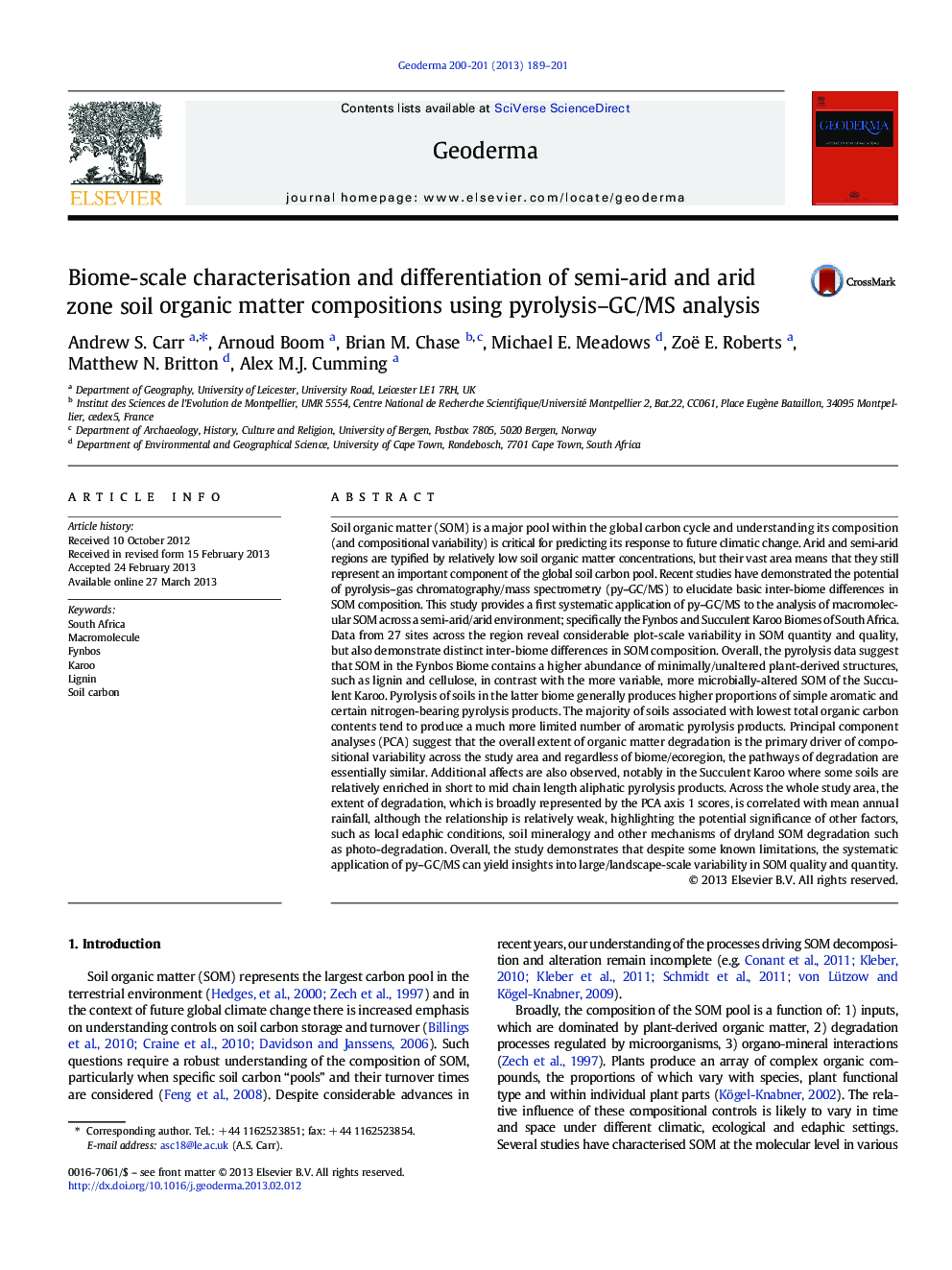| کد مقاله | کد نشریه | سال انتشار | مقاله انگلیسی | نسخه تمام متن |
|---|---|---|---|---|
| 4573531 | 1629486 | 2013 | 13 صفحه PDF | دانلود رایگان |

• A first large-scale systematic application of py–GC/MS to semi-arid/arid soils
• Soils in major biomes (Fynbos and Succulent Karoo) have distinct SOM compositions.
• Mechanisms of SOM alteration are the same in different biomes/ecoregions.
• SOM variability is driven by extent of modification of plant-derived inputs.
Soil organic matter (SOM) is a major pool within the global carbon cycle and understanding its composition (and compositional variability) is critical for predicting its response to future climatic change. Arid and semi-arid regions are typified by relatively low soil organic matter concentrations, but their vast area means that they still represent an important component of the global soil carbon pool. Recent studies have demonstrated the potential of pyrolysis–gas chromatography/mass spectrometry (py–GC/MS) to elucidate basic inter-biome differences in SOM composition. This study provides a first systematic application of py–GC/MS to the analysis of macromolecular SOM across a semi-arid/arid environment; specifically the Fynbos and Succulent Karoo Biomes of South Africa.Data from 27 sites across the region reveal considerable plot-scale variability in SOM quantity and quality, but also demonstrate distinct inter-biome differences in SOM composition. Overall, the pyrolysis data suggest that SOM in the Fynbos Biome contains a higher abundance of minimally/unaltered plant-derived structures, such as lignin and cellulose, in contrast with the more variable, more microbially-altered SOM of the Succulent Karoo. Pyrolysis of soils in the latter biome generally produces higher proportions of simple aromatic and certain nitrogen-bearing pyrolysis products. The majority of soils associated with lowest total organic carbon contents tend to produce a much more limited number of aromatic pyrolysis products. Principal component analyses (PCA) suggest that the overall extent of organic matter degradation is the primary driver of compositional variability across the study area and regardless of biome/ecoregion, the pathways of degradation are essentially similar. Additional affects are also observed, notably in the Succulent Karoo where some soils are relatively enriched in short to mid chain length aliphatic pyrolysis products. Across the whole study area, the extent of degradation, which is broadly represented by the PCA axis 1 scores, is correlated with mean annual rainfall, although the relationship is relatively weak, highlighting the potential significance of other factors, such as local edaphic conditions, soil mineralogy and other mechanisms of dryland SOM degradation such as photo-degradation. Overall, the study demonstrates that despite some known limitations, the systematic application of py–GC/MS can yield insights into large/landscape-scale variability in SOM quality and quantity.
Journal: Geoderma - Volumes 200–201, June 2013, Pages 189–201